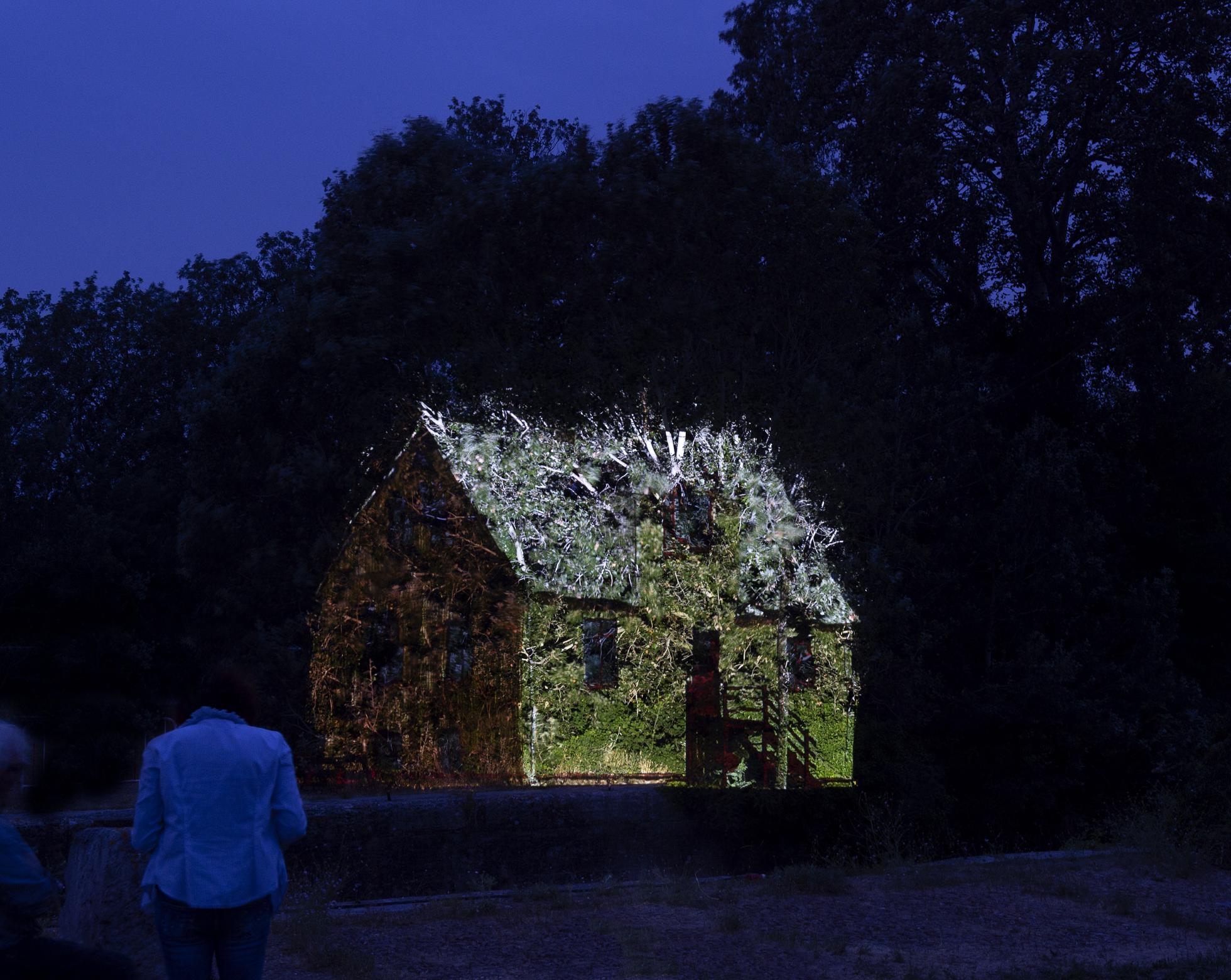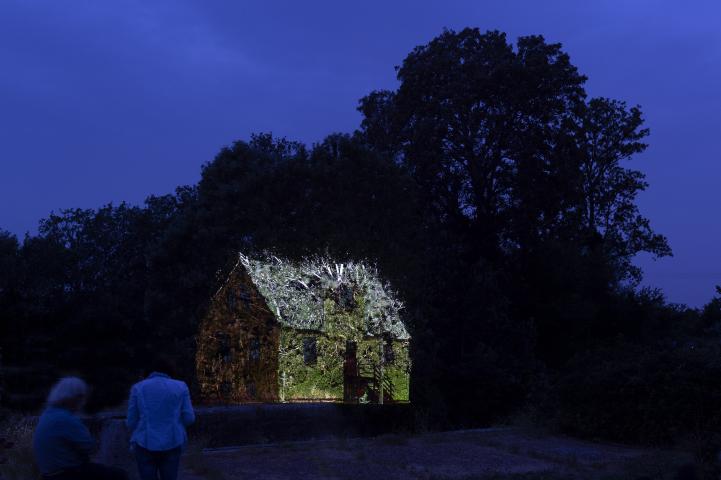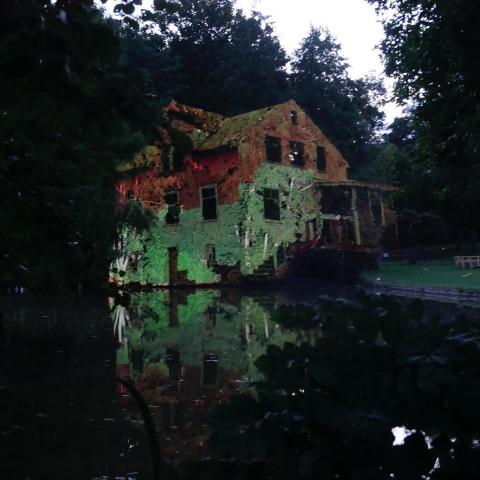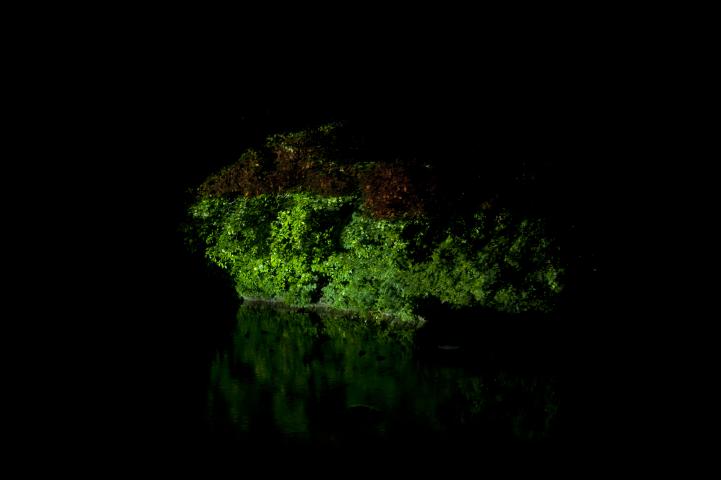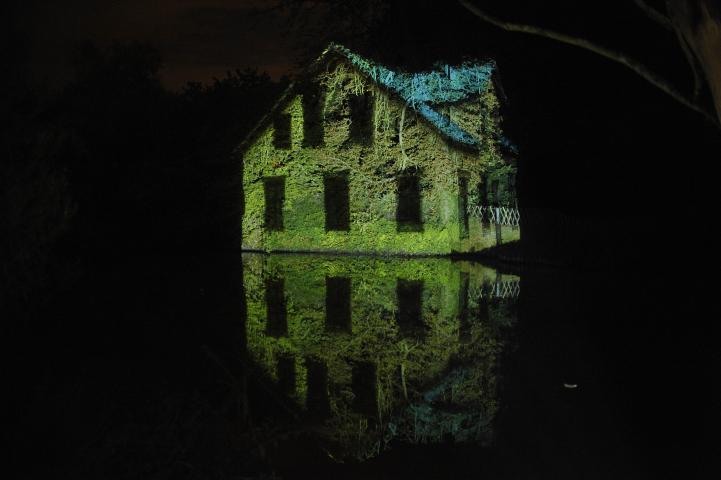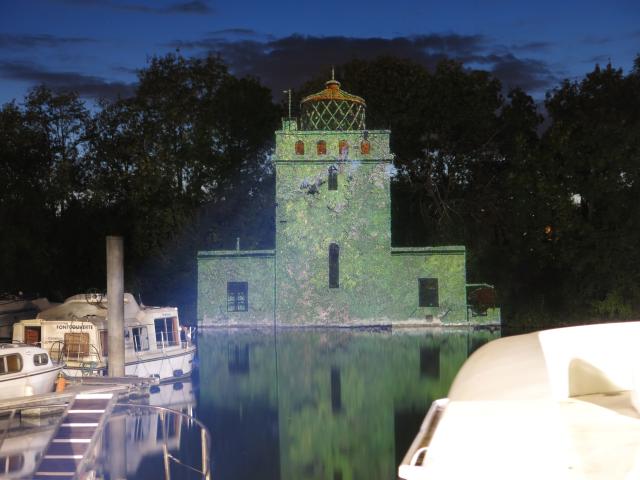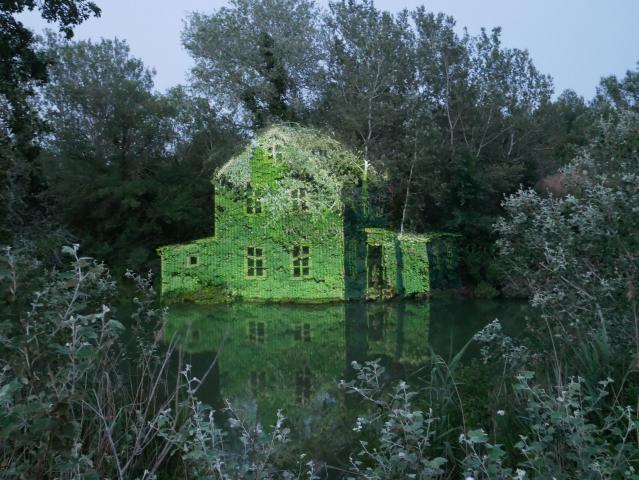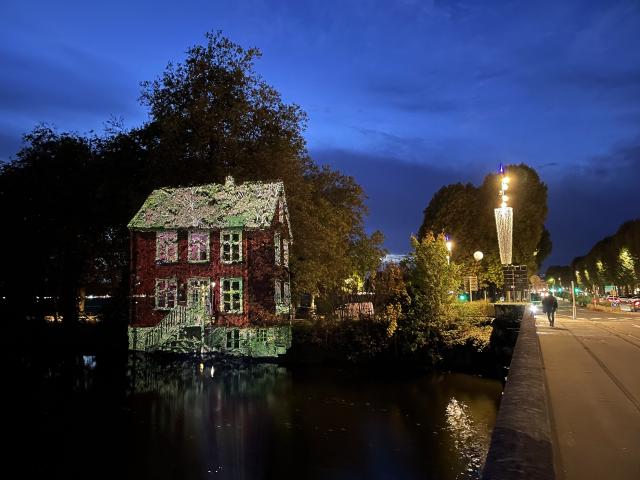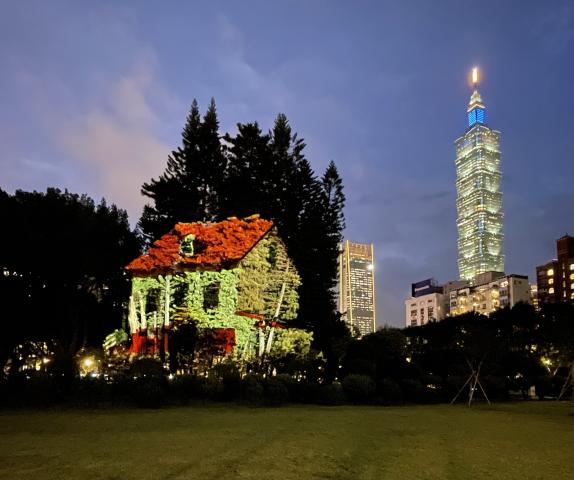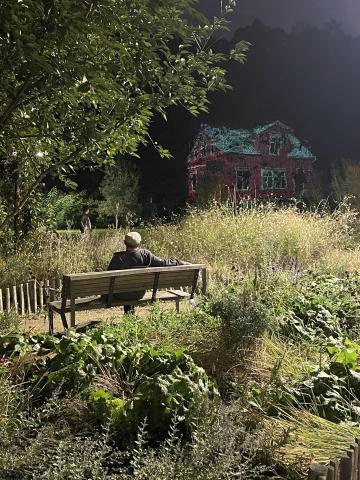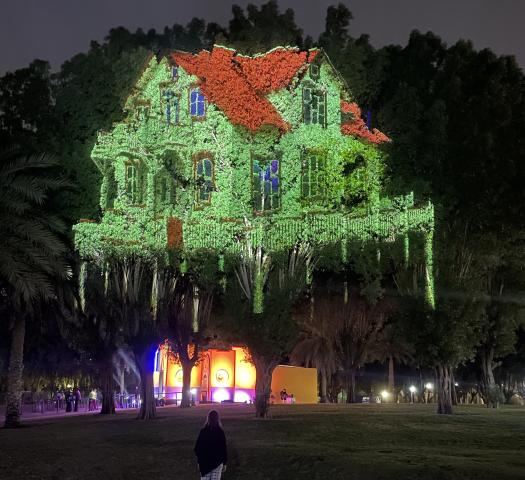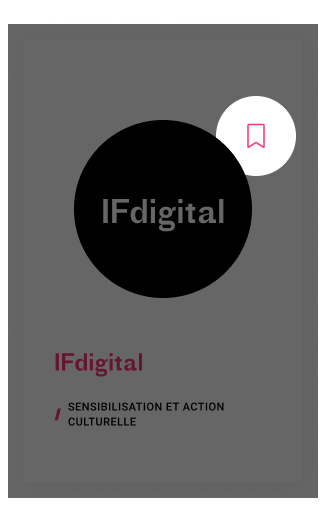FADING # is a video installation featuring the appearance of a house, projected on a scale of 1 in a landscape. The projection takes place at dusk, right in the landscape, whatever it may be: trees, bushes... domesticated or not. Twilight reveals the subtle metamorphosis of the landscape: light fades, night falls, the house appears, and disappears again at sunrise.
FADING #
Find out more
FADING # is a video installation featuring the appearance of a house. The projection takes place at dusk: the light dims, night falls, the house appears, and disappears again at sunrise.
FADING # has the appearance of a house, but is more akin to the idea of a cabin, in the sense that there is no real threshold, no marked boundary between inside and outside. Doors and windows are visible, but do not fulfill their function. These architectures, in which shelter seems possible, are both material and immaterial, open to all winds; for it is ultimately nature that welcomes and surrounds us.
Like a dowser, or a gold digger, Sophie Laly is constantly on the lookout for new architectures to locate and reveal. The aim is not to find a spring or a shelter for the night, but to fictionalize the memory of a place whose genesis is not visible. A cartography is enriched as discoveries are made.
Sophie Laly likes to question the way we look at nature and the landscape. Her aim here is to re-establish or find the right balance between the visual objects she creates and the spaces in which they unfold. And through FADING#, beyond fictionalizing a memory, a history, this intervention in nature itself offers a new dimension to the landscape.
All the "images" of houses are taken from photos taken in Iceland, "at the end of the end of the end" of a Fjord. It's as if the inhabitants of this island, itself isolated, were seeking even greater isolation by entrenching themselves further than the end of the road that takes us there.
Today, these relocated houses appear as samples of a particularly vivid folklore, perpetuating an ancestral belief that nature is inhabited by a hidden people.
A cartography appears as a memory of apparitions, but also testifies to the deployment of a common imaginary, on a planetary scale.
This shift in focus affects the landscape, which no longer appears as a painting contemplated from a distance, but as an environment in which the viewer is immersed. The viewer is no longer in front of the landscape, but in it for the duration of a night.

Merci pour votre contribution.
Vous serez informés de sa publication ou d’une éventuelle demande de compléments.





